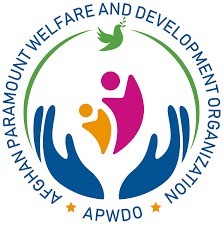Emergency response

Saving Lives, Restoring Dignity
At APWDO, our Emergency Assistance programs are a vital part of our mission to support vulnerable communities across Afghanistan. We respond rapidly—within 72 hours—to crises through a trained roster of emergency staff and dedicated volunteers.
Our comprehensive response framework includes the distribution of food supplies, emergency shelter materials, medical first aid kits, non-food items (NFIs), and cash assistance initiatives.
In 2023–2024, we provided emergency cash support to over 18,000 individuals across multiple provinces. These interventions not only addressed urgent survival needs but also helped families begin the path to recovery and stability during times of severe hardship
Emergency Humanitarian Response Expertise
APWDO has successfully implemented 30 emergency humanitarian projects, including 15 UNOCHA/AHF-funded initiatives. Our expertise includes:
- Cash Assistance: Unconditional cash transfers, cash-for-food, cash-for-work.
- Winterization Support: Provision of blankets, heating materials, and winter clothing.
- Non-Food Items (NFI) & Shelter: Distribution of essential relief materials
- Disaster Response: Emergency relief for displaced populations.
- Emergency Health & Nutrition: Addressing urgent health needs, including maternal health.
- Education: Community-Based Education (CBE) classes for children affected by crises.
Reach & Impact
APWDO has successfully implemented over 30 Emergency Response projects with INGOs throughout 20 Provinces, and 60 districts of Afghanistan northern, eastern and central regions.
- Geographical Coverage: Kunar, Badghis, Ghor, Baghlan, Samangan, Jawzjan, Balkh, Badakhshan, Kabul, Parwan, Badghis (covering 40+ districts).
- Direct Beneficiaries: 18,000 individuals, covering IPC3 & IPC4 populations, persons with disabilities, women-led households, refugees, IDPs, host communities, and pregnant & lactating women (PLWs).
- Indirect Beneficiaries: Over 90,000 people.
Our emergency response follows a participatory approach, involving coordination with local authorities, community leaders, and international humanitarian clusters. This ensures our efforts complement other initiatives and avoid duplication. We prioritize reaching vulnerable groups such as internally displaced persons (IDPs), returnees, and host communities.
APWDO’s commitment to emergency assistance extends beyond immediate aid. We focus on building community resilience by integrating disaster risk reduction into our programs. This includes training community members in emergency preparedness, rehabilitating critical infrastructure, and promoting sustainable practices to reduce future disaster impacts. By addressing both immediate and root causes of vulnerability, we aim to create lasting change.

APWDO team conducting a needs assessment in a community

APWDO team conducting a needs assessment in a community]

APWDO’s rapid response team mobilizing for a new emergency
Donor funding has enabled us to maintain a state of readiness, with pre-positioned supplies and a rapid response team that can be mobilized quickly. This preparedness is crucial in Afghanistan, where natural disasters and conflict-related emergencies are common. Our ability to act swiftly has been a defining feature of our emergency assistance programs and has saved countless lives. In all our emergency operations, we adhere to international humanitarian standards, ensuring our assistance respects the dignity and autonomy of beneficiaries. We continuously monitor and evaluate our programs to improve our approaches and enhance effectiveness. The lessons learned from each response are documented and fed back into our planning processes, allowing us to refine our strategies and deliver higher-quality support with each intervention
Emergency Response
At APWDO, our Emergency Assistance programs are a cornerstone of our mission to support vulnerable communities across Afghanistan. We respond rapidly and effectively with in 72 Hours to crises by delivering food, shelter, non-food items (NFIs), medical first aid kits and cash assistance
Focus on Vulnerable Populations
We prioritize communities most affected by conflict, displacement, and natural disasters. This includes IDPs, returnees, and host populations—with a strong emphasis on children, women (particularly PLWs), elderly persons, and persons with disabilities
Gender and Protection Mainstreaming
APWDO integrates protection and inclusion in all interventions by:
- Deploying female staff for outreach to women
- Ensuring safe and culturally appropriate distribution sites
- Mainstreaming GBV risk mitigation.
- Utilizing feedback and complaints mechanisms, including AWAAZ hotline and internal CFRM
We also provide beneficiaries with clear information on project scope, selection criteria, and their right to report misconduct
Monitoring, Learning, and Adaptability
Our responses are guided by continuous learning. We:
- Conduct regular market assessments to determine whether to deliver assistance via cash or in-kind
- Use Post-Distribution Monitoring (PDM) to assess satisfaction and effectiveness
- Document lessons learned to improve future planning and delivery
Coordination for Impact
APWDO works in close coordination with:
- Humanitarian Clusters (e.g., ES-NFI, Nutrition)
- Local authorities and community elders
- OCHA and other humanitarian actors
We align with the Humanitarian Response Plan (HRP) and ICCT priorities to ensure complementary actions and avoid duplication.

APWDO’s rapid response team mobilizing for a new emergency
Preparedness and Rapid Response
- Pre-positioned stocks
- A trained rapid response team
- SOPs and emergency plans in line with international humanitarian standards
Through timely response and community-based approaches, APWDO continues to save lives and strengthen resilience across Afghanistan.
Join Us in Saving Lives: With 22.9 million people in need of humanitarian assistance in 2025, APWDO is committed to addressing Afghanistan’s most pressing humanitarian challenges. We seek funding, technical support, and strategic partnerships to expand our emergency response efforts. Your collaboration can help us reach more vulnerable communities and provide life-saving assistance where it is needed most

